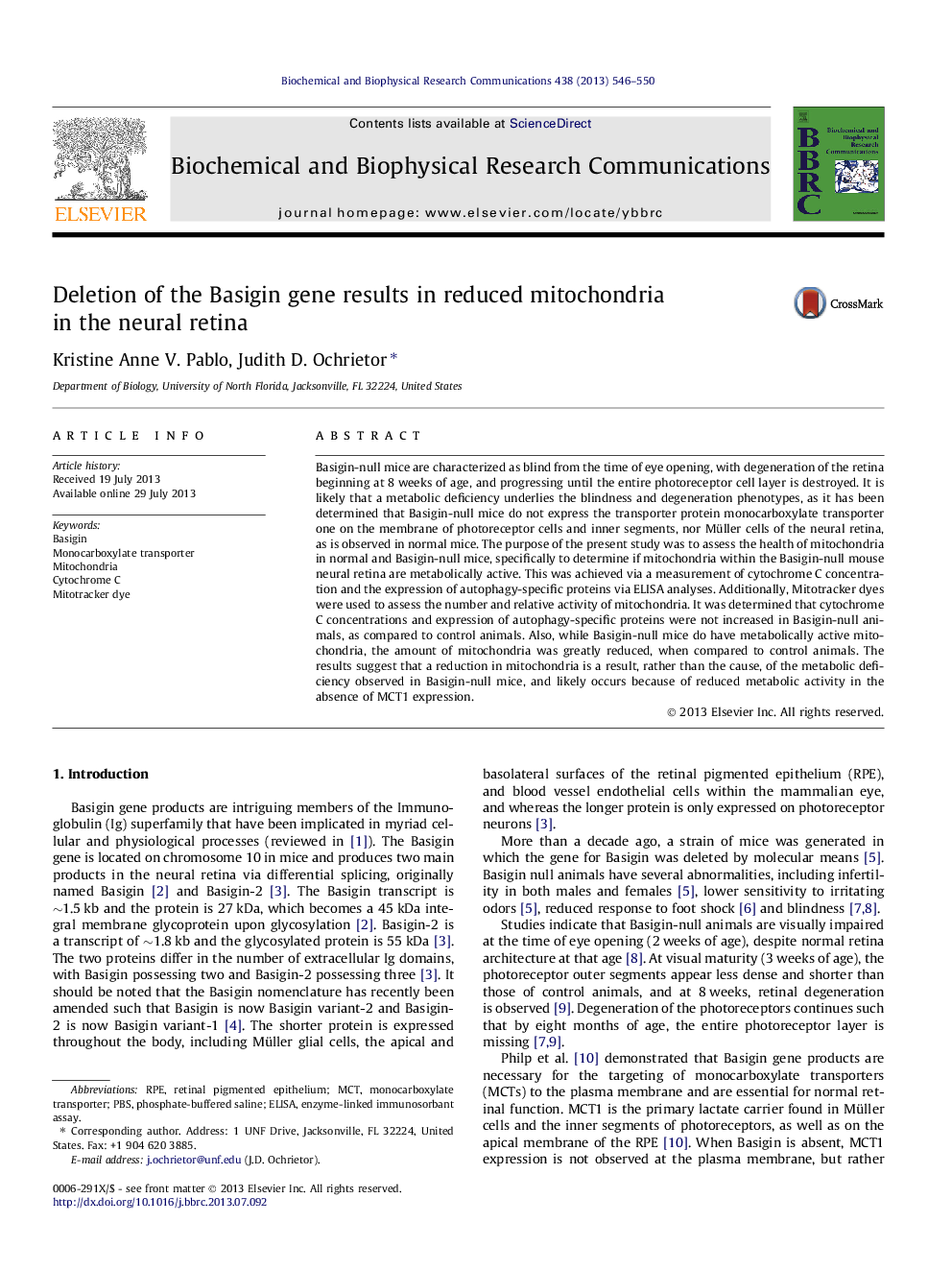| Article ID | Journal | Published Year | Pages | File Type |
|---|---|---|---|---|
| 1928649 | Biochemical and Biophysical Research Communications | 2013 | 5 Pages |
•Deletion of the Basigin gene in mice leads to a novel form of retinal dystrophy.•Deletion of the Basigin gene results in reduced numbers of mitochondria in the neural retina.•There is no change in levels of cytochrome C or expression of autophagy-specific proteins.•It is thought that the reduction in mitochondria is due to lack of photoreceptor activity.
Basigin-null mice are characterized as blind from the time of eye opening, with degeneration of the retina beginning at 8 weeks of age, and progressing until the entire photoreceptor cell layer is destroyed. It is likely that a metabolic deficiency underlies the blindness and degeneration phenotypes, as it has been determined that Basigin-null mice do not express the transporter protein monocarboxylate transporter one on the membrane of photoreceptor cells and inner segments, nor Müller cells of the neural retina, as is observed in normal mice. The purpose of the present study was to assess the health of mitochondria in normal and Basigin-null mice, specifically to determine if mitochondria within the Basigin-null mouse neural retina are metabolically active. This was achieved via a measurement of cytochrome C concentration and the expression of autophagy-specific proteins via ELISA analyses. Additionally, Mitotracker dyes were used to assess the number and relative activity of mitochondria. It was determined that cytochrome C concentrations and expression of autophagy-specific proteins were not increased in Basigin-null animals, as compared to control animals. Also, while Basigin-null mice do have metabolically active mitochondria, the amount of mitochondria was greatly reduced, when compared to control animals. The results suggest that a reduction in mitochondria is a result, rather than the cause, of the metabolic deficiency observed in Basigin-null mice, and likely occurs because of reduced metabolic activity in the absence of MCT1 expression.
